What patterns can be laid out with paving slabs and paving stones?
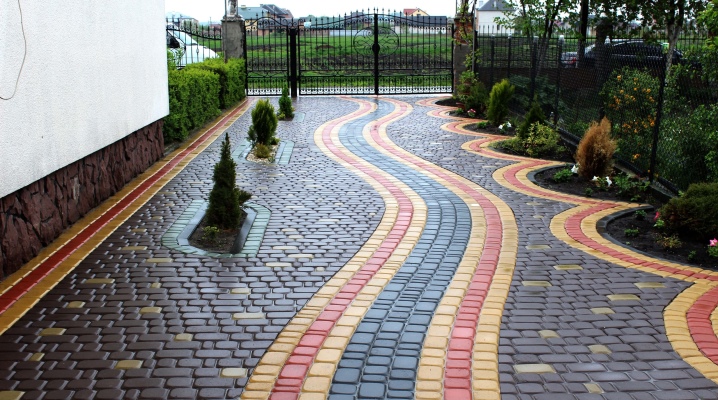
In addition to the main "utilitarian" function, paving slabs also have an aesthetic function: they set the tone and add colors to the landscape design. Paving slabs can be laid out in different ways. What kind of styling methods exist - read the article.
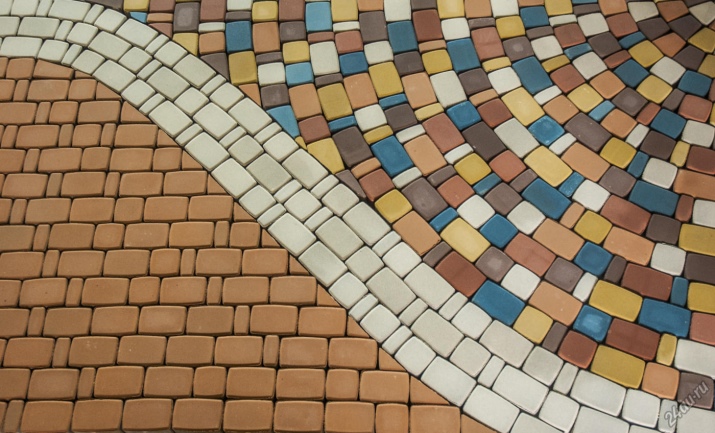
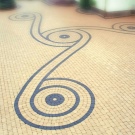
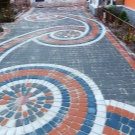
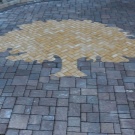

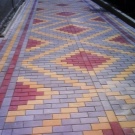
Basic styling methods
There are several ways to lay out the road with paving slabs or paving stones. It is worth choosing depending on where the road leads. If you have a desire to beautifully arrange a path to your own estate and bring a little beauty to your summer cottage or in the courtyard of a private house, you can lay it in many ways. And in addition to the main well-known ones, which are used everywhere, there are options that were recently invented by designers. You need to consider everything to determine the style.
In addition, a beautiful tile pattern can be easily laid out with your own hands: this procedure does not require special skill and long years of study. The path is yours, and only you decide to lay out the drawing on the path in two colors, from three colors, to make it white or multi-colored - nothing limits you in this.

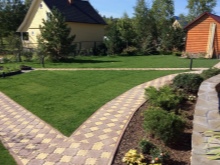
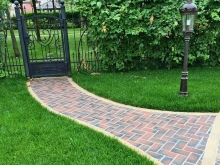
Classical
The most common way of calculating, it is also called "linear". In this case, the bricks of the tiles are laid exactly to each other. Such zones can be created using one color, or with a combination of different shades. Very often, the classic layout is combined with other schemes.
The classic layout can be of different types.
- With a shift - when the joints of the bricks are scattered. In this case, the tiles are laid like bricks when building a house. The offset can be half or three quarters, depending on the wishes of the owner.
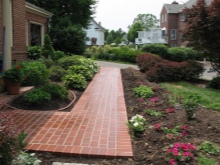
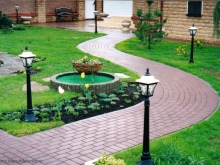
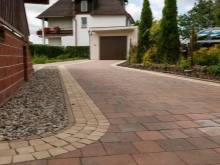
- No shift - vertical or horizontal, depending on how the tiles are positioned relative to the edge of the lot. It is important to know that horizontally laid tiles visually "widen" the track, and vertical layout lengthens it. This also works for offset calculations, but you can only fully appreciate the power of such an illusion on a non-offset track.
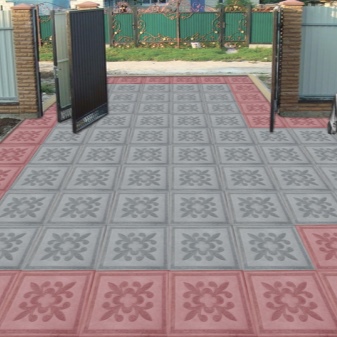

"Herringbone" and "Braid"
These two methods allow you to slightly diversify the laid out track. In the case of a “Christmas tree”, the bricks of the tiles are laid out in rows, but at an angle relative to each other, therefore, they form characteristic wedges at an angle of 45 degrees. This layout style makes the track look like it is being compressed.
The "braid" is very similar to the "herringbone", but in it the tiles alternate a little differently - as if intertwining. This effect is created due to the special order - the longitudinal and transverse layout alternate with each other. The bricks are laid out at right angles to each other, so the path looks like a real basket. It is important to note that this way visually expands your track. This must be taken into account before starting work, because this is not suitable for every site.
"Herringbone" and "Plaitonka" are very popular options and are most often used to decorate adjoining plots.
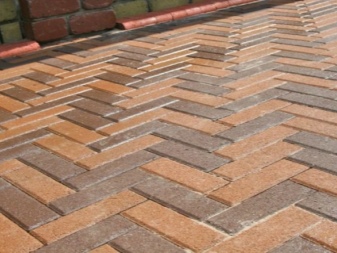

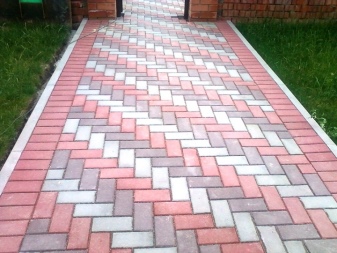

Retro style
Quite an interesting and unusual type of paving slabs laying. As a rule, the path is laid out with square tiles of different sizes and colors. The various combinations of these elements amaze the imagination and help create the perfect old-style track. Rectangular, radial and fan patterns take you back in time and walk along the cobbled road, which looks at you from pictures of grandparents.
You may have seen retro styling in large cities like Prague or St. Petersburg. As a rule, this method is used in paving significant historical objects. Compared to ordinary bricks, the thickness of this tile is much greater, which allows it to be used for laying on roads, parking lots, when facing porches, steps or platforms.
Tiles that are laid out in a retro style are very different in texture. It will be difficult to buy them in a regular store, most often you have to make to order. It will not be easy to lay out such a path if there is no experience in this matter. Your best bet is to go to a professional who will make the drawings and do the rest of the work. All that remains is to enjoy the beautiful path.

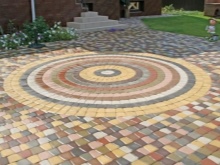
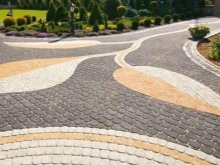
"Round"
Quite complicated, but also an interesting tile layout. The circular pattern is mesmerizing and helps decorate a relatively large area. It looks great in the parking lot near the house or in the local area, where you can then install a round gazebo.
If you use bricks of different colors and lay them according to a certain pattern, you can get an incredibly beautiful landscape design. Circular styling, especially from elements of different colors, can be combined with other patterns such as the same "herringbone". This way you can create beautiful flowers or just geometric patterns.
Since this pattern is much more difficult to execute, it is worth planning in advance on paper how you will lay out the elements. The main thing is not to forget that wedge-shaped bricks are used in this style, because the circle will not turn out completely even from rectangular tiles.
This must be indicated on your drawing, so as not to get confused later.
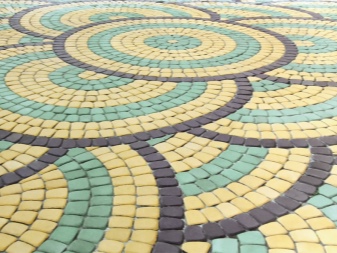

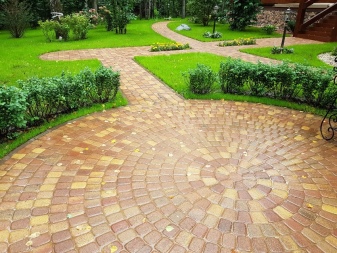
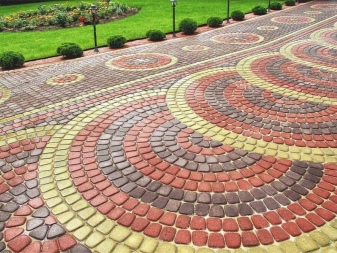
Other layout options
There are many other ways to install paving slabs. For example, artistic. It requires considerable skill and sufficiently developed skills in working with tiles. It is possible to lay out the tiles in this way if the scheme is carefully developed and there is an experienced person nearby.
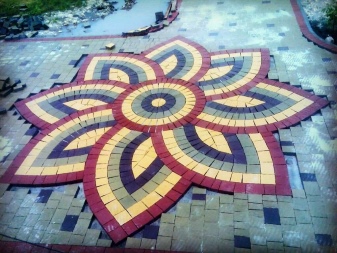

Artistic layout does not have a single style and, as a rule, the drawing depends only on your imagination. It can be a geometric abstract composition, mosaic, ornament, radial or square layout, their combination, or even a semblance of an optical illusion. If you are not confident in your abilities, it is better to contact landscape designers.
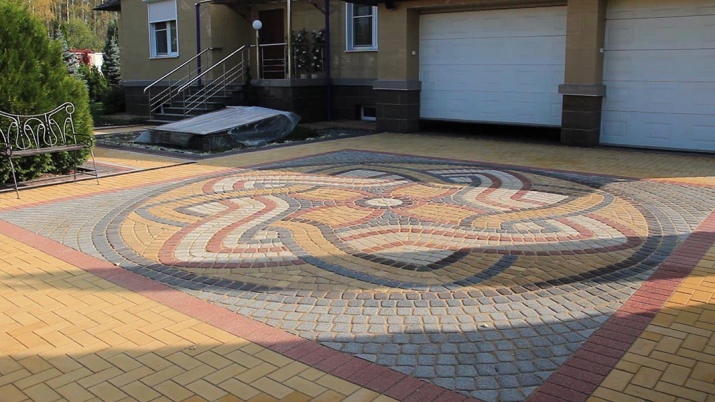
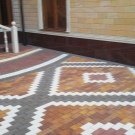
Another type of layout - "random" or "chaotic" - is a universal solution if you have different types of tiles on your hands. This scheme is perfect for decorating the adjoining territory or garden paths. You can lay out the bricks however you want, in any order. Chaos is the basis of this method. After completing the work, you can be sure that your site is unique. By the way, landscape designers are very fond of this method: they combine different colors and shapes and create incredible compositions from paving stones.
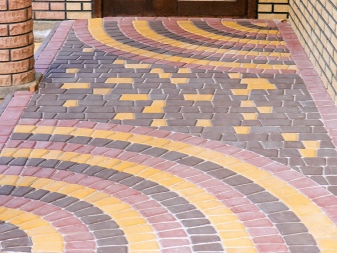
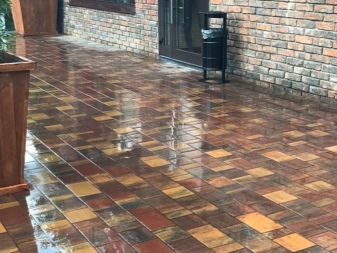
Which pattern should you choose?
This question is probably faced by all owners who decided to decorate the road with an interesting pattern. Any paving is painstaking work, even if you work according to a pattern or lay out an uncomplicated pattern. It is important to decide right away, because you definitely will not want to lay the tiles again.
It is worth choosing a paving scheme based on factors such as:
- landscape;
- site architecture;
- place of laying;
- dimensions and configuration of the site.

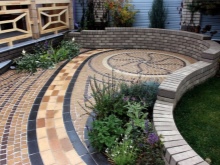
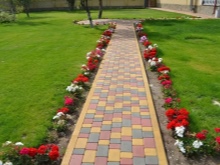
Usually, based on all these factors, they choose not only the pattern, but also the thickness of the tiles. The paved road will stay with you for a long time, because the average service life is 40-50 years. A paved road with a creative tile pattern will not only create a pleasant impression, but also "model" the space around it, visually expanding or narrowing it.
If you intend to beautifully arrange the space for any building or around it, it is best to lay the paving stones in a circle. So the building itself will be in the center, and it will be much more convenient to approach it. It would be logical to make a parking place or next to a playground in a retro style using thick bricks. This will not only look beautiful, but also make cleaning the area easier.
For a path between trees or in a garden, the classic method is more suitable.

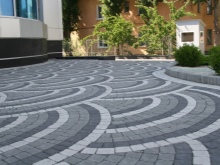
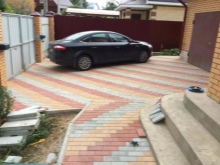
Beautiful examples
There are many examples of how landscape designers show their imagination and create real masterpieces. It is best to consider all of them, and then choose what you like.
- Not only professionals, but also inexperienced people can combine two methods of laying out and create beautiful compositions. The color scheme is also very important, it allows you to get an even and beautiful circle.
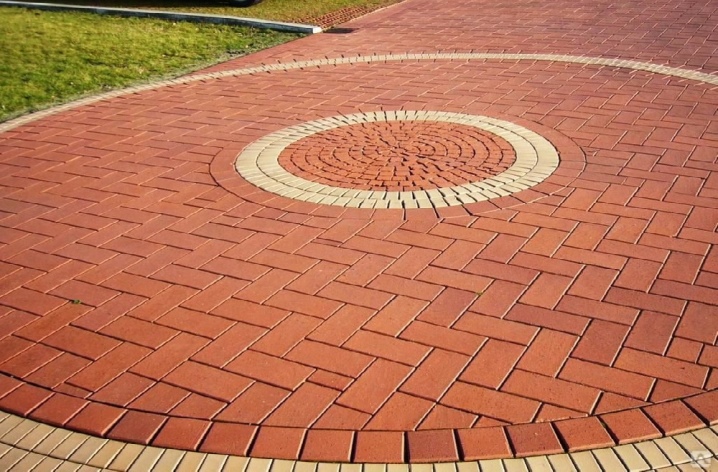
- In this photo you can see a curious combination of the "circular" way of laying tiles with a classic offset. Black and yellow colors go well and give an interesting shade to the local area. Anyone can cope with such work, it is only important to prepare materials and drawings.
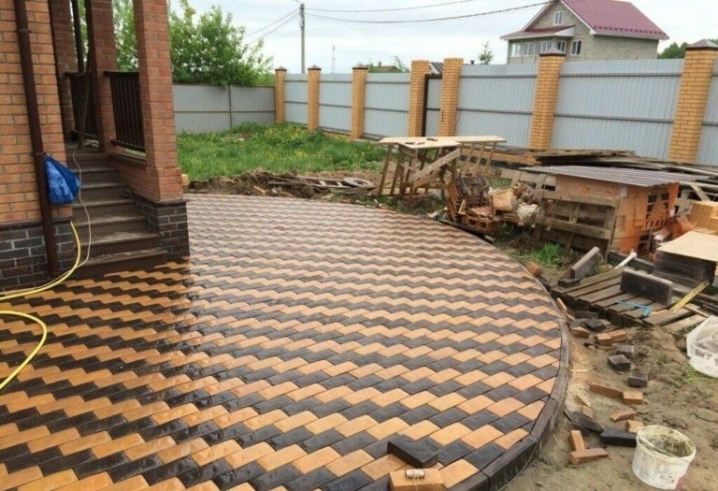
- It is possible to alternate the longitudinal and transverse directions of the paving to create a more interesting weaving effect. A double brick looks much more interesting if the next one is made in a different color or turned over.
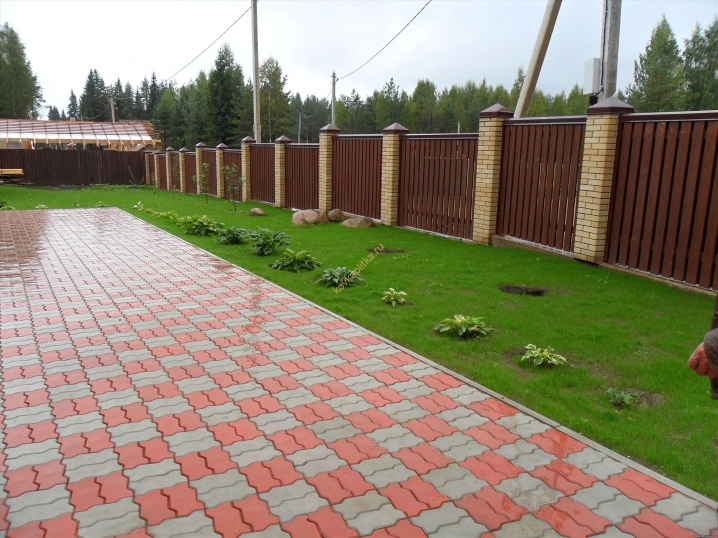
- This example looks simple enough, but it will require a diagram and your attention. Despite the fact that this is just a classic layout with minor changes, some difficulties can arise. You will have to work hard not to miss a single corner, but the result will be worth it: a beautiful combination of different colors will add elegance to your path.
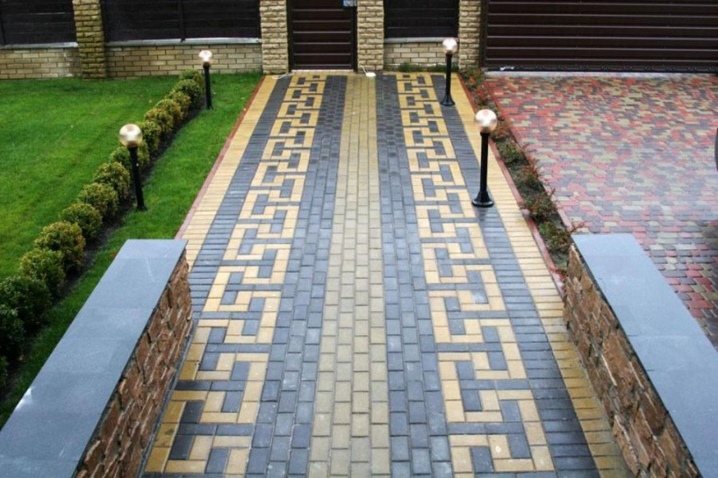
- Simplicity is also good. It is she who is guided by those who lay out chess patterns from square tiles 30x30. Just two colors - and you get a pretty beautiful "chessboard". You will especially enjoy walking along such a path.
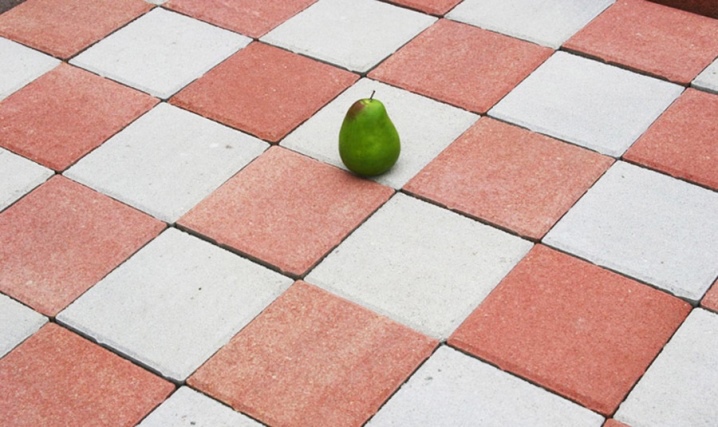
- There is also such simplicity, where modest colors are combined with elements of different shapes and sizes. But if there is a fantasy, nothing will prevent you from making a diagonal layout and framing it with a classic layout. Let there be no riot of colors here, but the tiles will look smooth and very pleasant.
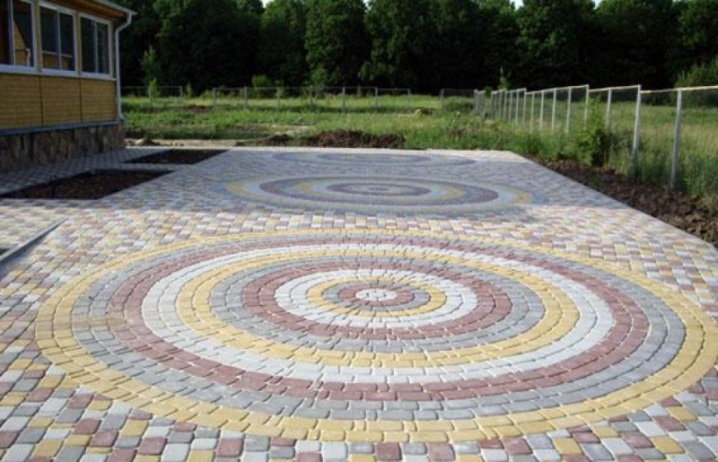
- Who said classic layouts can be boring? If you combine the two classic types of layouts (with and without a shift), you get an easy-to-perform work that attracts all passers-by. A pleasant effect is achieved due to the red-brown shades, they should be chosen if you want to make a calm and noble path.
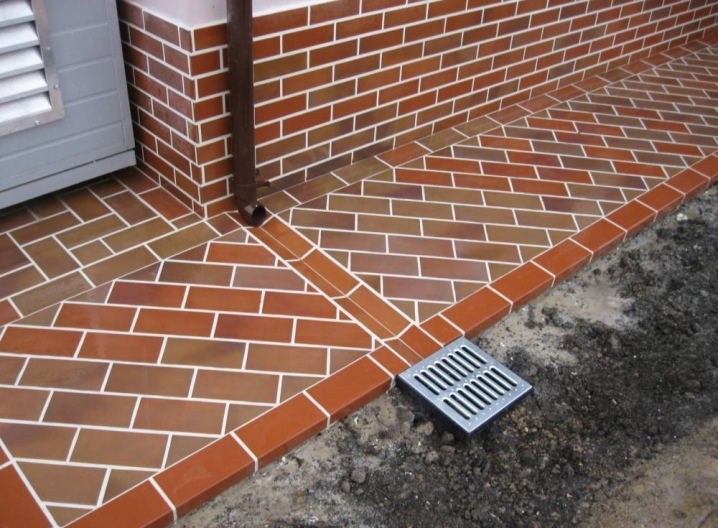
- If this is not the first time you have been laying paving stones and have a little experience, you can repeat the work below, laying out wonderful flowers from stone bricks. Yellow and gray give an interesting color combination, and a well-paved path, combining a classic layout with a circular one, creates a fabulous image of a “yellow brick road”.

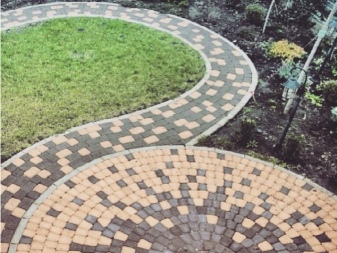
- By cutting out the tiles in advance in the shape of colorful butterflies, the owner of the house can give the red tiles an absolutely incredible look. In this way, you can create a real work of art. Due to its pleasant color range, the coating makes an indelible impression.
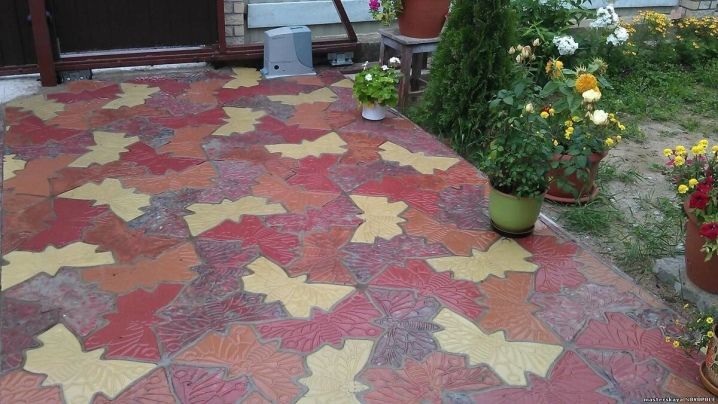
- You can also look at an interesting application of the "chaotic" order of calculation. By combining tiles not only of different shapes, but also of different sizes, the landscape designer got an effect that vaguely resembles lacquered wood or a handful of nuts in a basket. This is facilitated by the color scheme of the tiles - brown with black and yellow shades - and a certain order.
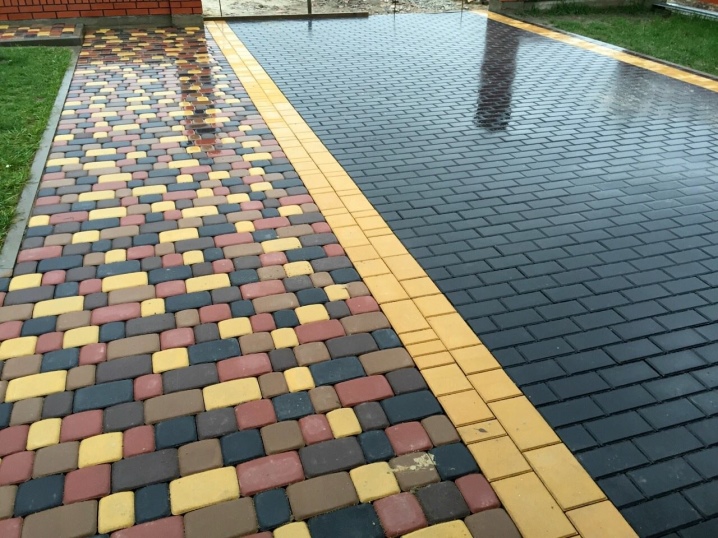
- You also need to be able to mix, because this is the only way to get a real assortment of different styles. First, the designer laid out circles of different colors using a "circular" styling method.And then he made it so that the black and red circles "grew" into squares and were laid out in a checkerboard pattern. So even from two-tone tiles, you can lay out a real masterpiece.

- Even "chaos" and "classic" can be harmoniously combined: tiles of different lengths laid out exactly to each other form a kind of cobbled road. Color solutions allow you to "draw" a yellow path and white borders on a gray surface. Simple, but at the same time very elegant.
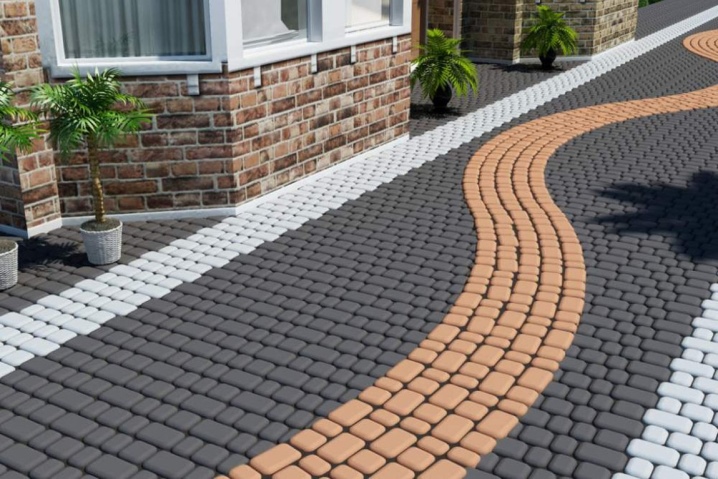
- In this work, the artists dispersed in earnest, deciding to depict a complex patterned flower from tiles of several colors. The classic layout is interspersed with circular, then chaotic, here and there it goes chaotic, and somewhere - with a shift. Such masterpieces of landscape design are clearly not for beginners, and only professionals can deal with them. And even experienced people cannot do without a pre-drawn scheme.
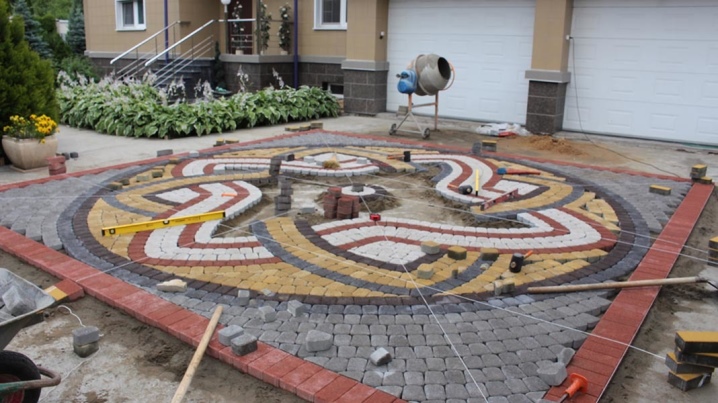
- And a little more about illusions - such a tile can make your head spin if you look at it from a certain angle. The fact is that due to the diamond-shaped tiles of certain colors, the designer has created a "stepped" illusion of volume: it looks beautiful and pleases the eye.
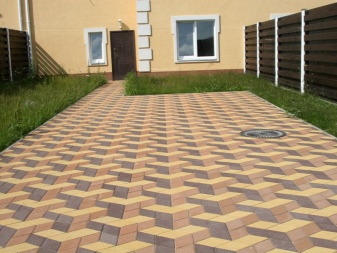
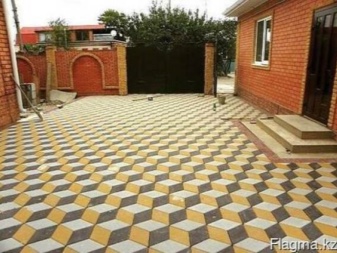
- Real professionals sometimes create real works of art right on the road. By combining different methods and styles, they experiment with colors and shades and achieve incredible results.

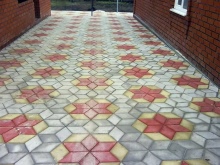
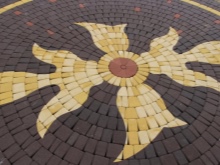
It is important to understand that this, among other things, is also a complex process, the result of which will remain with you for a long time. Therefore, before starting work, carefully consider what result you want to achieve, how many tiles you need approximately, what color and shape it is. And never be lazy to draw up a layout diagram - it will be very useful to you in the process.













The comment was sent successfully.